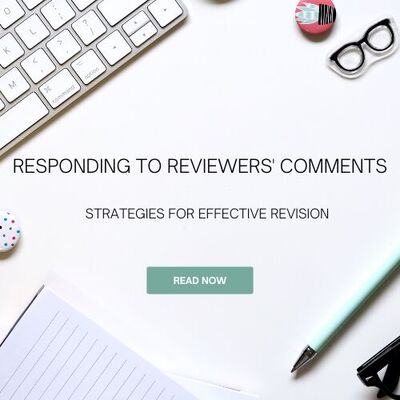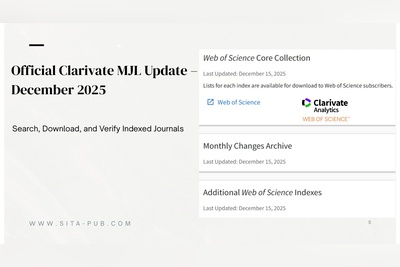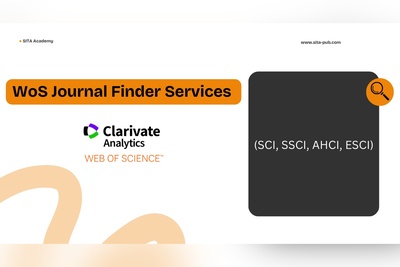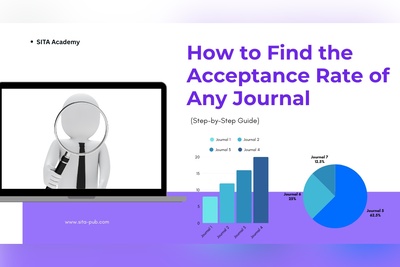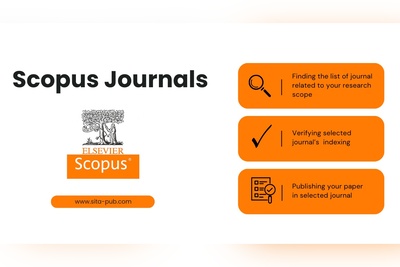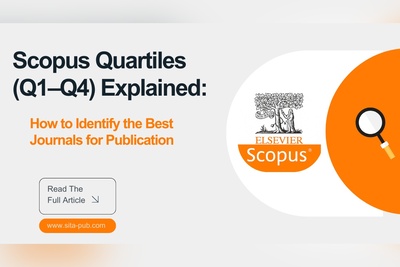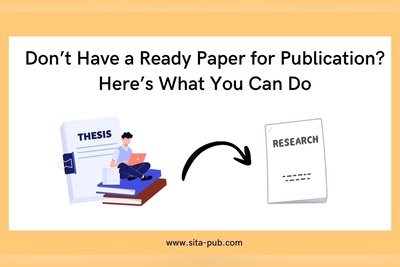Want to Publish Fast? Here's What Journals Won’t Tell You
Discover expert-level tips for faster academic publication that most journals won’t tell you. From journal selection and peer review tricks to fast-track options, learn how to publish your research quicker in Scopus, ISI, or PubMed-indexed journals.
- Not All Journals Are Equal—Check Their Processing Time Before Submitting
- Pre-Submission Inquiries Save You Time
- Target Journals That Offer “Fast Track” or “Express” Options
- Clear, Concise Writing = Faster Review
- Suggesting Reviewers (Yes, It Helps)
- Respond to Revisions Promptly and Politely
- Cite the Journal’s Previous Work (Strategically)
- Choose Open Access if Speed is Critical
- Avoid Journals with Chronic Backlogs
- Professional Help Can Save Months

Publishing in a scientific journal is a rewarding milestone, but it’s no secret—it can take months or even years from submission to final acceptance. Behind the scenes, seasoned researchers and journal insiders know a few “hidden” strategies that can drastically reduce publication time. If you're looking to publish faster, especially in indexed journals like Scopus or Web of Science, this post reveals what journals don’t openly tell you—but experienced authors have learned through years of trial and error.
1. Not All Journals Are Equal—Check Their Processing Time Before Submitting
What journals won’t advertise: The average peer review and publication time.
Some journals take 2-6 months just to provide a first decision. Others can deliver a verdict in as little as 2-4 weeks, especially those that offer "Fast Track" options. But this isn't widely disclosed on their websites.
What to do:
Check the journal’s website under “For Authors” → some mention average decision times.
Look at Scopus or Elsevier Journal Insights for stats like:
Time to first decision
Time to final decision
Acceptance rate
Email the journal directly and ask: “Can you kindly share your average time to first decision?”
Pro tip: Journals in newer or emerging fields often respond faster than high-impact legacy journals.
2. Pre-Submission Inquiries Save You Time
If your topic is on the edge of the journal’s scope, it’s better to check before submitting.
What journals won’t tell you openly: They desk-reject many papers not because they’re low quality, but because they’re simply not a good match.
What to do:
Send a short pre-submission inquiry email (include your title, abstract, and 1-2 sentences explaining the fit).
This can prevent weeks of wasted time waiting for a desk rejection.
Pro tip: If you get a positive response, your paper is already on the editor’s radar, which can speed up the review process.
3. Target Journals That Offer “Fast Track” or “Express” Options
Some journals (especially in medicine, engineering, or tech) offer accelerated review programs, but they don’t make them obvious.
What journals won’t promote publicly: Fast track is often invitation-only or only for very specific types of submissions (e.g., clinical trials, emerging epidemics, or funded research).
What to do:
Look for keywords like “Rapid Communications,” “Short Reports,” “Express Submissions,” or “Accelerated Review” in the journal’s section types.
Contact the editorial office and ask if an expedited option is available.
Pro tip: Editors are more likely to consider fast track if your paper is:
Time-sensitive (e.g., related to an ongoing crisis or new technology)
Funded by a major agency
Co-authored with recognized researchers
4. Clear, Concise Writing = Faster Review
What journals won’t tell you: Reviewers are overloaded. They spend less time reviewing poorly written or confusing papers.
How it slows you down:
Poor writing leads to misinterpretation → unnecessary reviewer comments → major revisions → delay of weeks or months.
What to do:
Have your manuscript reviewed by a native speaker or professional editor before submission.
Use AI-based tools (like Grammarly or ChatGPT) to check clarity and tone.
Follow the journal’s exact structure: Introduction, Methods, Results, Discussion (IMRAD).
Pro tip: The smoother your writing, the faster the review.
5. Suggesting Reviewers (Yes, It Helps)
Most journals allow (or require) authors to suggest reviewers.
What journals won’t say out loud: Suggesting qualified, responsive reviewers can speed up the process—but not too obviously friendly ones.
What to do:
Suggest 3–5 experts in your field who:
Have published recently
Have no recent co-authorship or affiliation with you
Check their email addresses and responsiveness beforehand
Pro tip: Avoid “fake reviewer” scandals by never using non-institutional emails or people with clear conflicts of interest.
6. Respond to Revisions Promptly and Politely
What slows many authors down: Delays in submitting revisions or poorly written rebuttal letters.
What to do:
Respond within the journal’s deadline—or ask for an extension early if needed.
Write a detailed, polite response letter, even if you disagree with the reviewer.
Use bullet points: Reviewer comment → Your response → Page/line number changes.
Pro tip: Editors notice when you cooperate professionally—it builds trust and accelerates acceptance.
7. Cite the Journal’s Previous Work (Strategically)
What journals won’t say, but editors notice: If your manuscript cites papers from the target journal, it:
Shows you’ve read their content
May subtly boost their citation count
What to do:
Add 2–3 relevant citations from recent issues (last 3 years).
Avoid forced or unrelated references.
Pro tip: Don’t overdo it—it must be organic and support your argument.
8. Choose Open Access if Speed is Critical
Many Open Access (OA) journals publish accepted papers within days of final approval.
What journals won’t tell you directly: Paid OA often includes faster processing (though this is unofficial).
What to do:
Weigh the cost against the benefit of faster visibility.
Look for journals that mention "online first" or “early access” publishing.
Pro tip: Open Access papers also tend to get cited faster due to quicker discoverability.
9. Avoid Journals with Chronic Backlogs
Some journals have a massive “accepted but not published” backlog that delays final publication by months.
What to do:
Check recent articles’ submission, acceptance, and publication dates (usually listed).
If there's a long gap between acceptance and publication, avoid that journal if time matters.
10. Professional Help Can Save Months
Many researchers lose time on:
Choosing the wrong journal
Formatting errors
Weak abstracts or titles
Rejected papers due to minor oversights
What experts do differently:
Hire publication consultants or editing services to handle submission details
Prepare multiple manuscripts from one study to publish in parallel (ethically)
Publishing faster doesn’t mean cutting corners. It means being strategic, prepared, and aware of how journals really work. While journals rarely publicize these tips, experienced researchers follow them consistently—and it often makes the difference between waiting 12 months and getting published in 6.
Professional Publication Support Services at SITA Academy
Choosing the right journal is one of the most important — yet often overlooked — steps in the publication process. The strategies shared in this article, like understanding journal scope, evaluating review timelines, and matching manuscript style with editorial preferences, are key to accelerating publication and avoiding unnecessary rejection.
At SITA Academy, we specialize in journal selection assistance, helping researchers find the most suitable journals based on their research field, indexing goals (Scopus, ISI, PubMed), desired publication speed, and manuscript type.
With our support, you can confidently submit your paper to the right journal the first time, increasing your chances of faster review and acceptance.
Contact Us for Personalized Assistance
Chat with us live using the online chat window on the lower right of this page — our academic advisors are ready to guide you in real time.
Below are our verified contact channels:
Verified Contact Channels
If you have any questions, inquiries, or would like to learn more about our services, please don't hesitate to reach out to us. Our dedicated team is ready to assist you.
